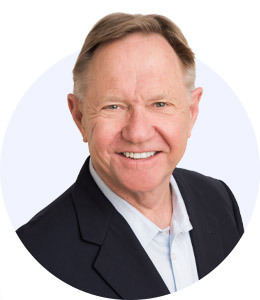When I started writing this weekly column in 2016, I felt it would be short lived—not due to my desire but because I felt I would run out of material. This turned out not to be so. You, the readers, are so helpful with suggestions on topics and questions. I also benefit from being out and about. Just in these last couple of weeks, I have been fortunate enough to be in Camden, New Jersey; Cincinnati, Ohio; and Norman, Oklahoma.
Being inside organizations and communities that are always looking to be better is exhilarating. Also, having more than 200 people working in companies I co-own brings that desire to make sure I am “eating my own cooking.” It also creates the realization that creating and sustaining a great workplace culture is not easy.
In today’s rapidly changing work environment, even the most experienced people can feel like beginners at times. I recently did a video on how we adjust to change. It is well understood that a new person will go through phases of self-doubt that subside with time as they learn and repeat a task. With experience, a person masters a skill and moves on to being able to teach others. However, even experienced master-level performers will often have an uncomfortable adjustment when new software or processes are introduced. An experienced person will adjust faster; however, it does not mean the adjustment is easy.
Change is hard. I listened to a CEO of one of the largest companies in the world speak on how online shopping and other issues were forcing changes to their processes, technology, and people. To prepare leaders, a change consultant was hired. At the first meeting, he asked each senior executive to move their watch from the wrist they usually wore it on to the other wrist. People were uncomfortable. They were told to wear it like that till their next session. A quick response from the group was, “When is the next session?” Why? Even that small change was not easy. The message was to not underestimate the impact of change on the workforce.
In the Models of Care Insight Study, over 3,300 people were studied to evaluate the group’s resistance to change: 8 percent were very change-ready, 32 percent were open to change, 28 percent were neutral, 25 percent were not open to change, and 7 percent were very resistant to change. When some people first looked at the numbers, they felt that the group was change-ready. Were they? My experience is that leaders can overestimate a group’s readiness for change. The key is the people in the middle. How can we get them to the change-readiness state?
The same is true in communities. I was in a community that completed a quality-of-life survey. A question was “Is the community moving in the right, neutral, or wrong direction?” Results showed 52 percent felt they were moving in the right direction, 18 percent felt neutral, and 30 percent felt things were wrong. The key is to keep the 52 percent with you and focus on providing information to help the 18 percent move in the right direction. It would be good if some of the 30 percent moved as well; however, the best use of time is on the 52- and 18-percent groups.
How does one move a department, organization, and/or community to the critical mass needed to implement change? Here are some suggestions.
- First, make sure you have a good education in place that includes listening. This will be needed throughout the change.
- Measure how people feel about the change. Don’t assume everyone is supportive. Yes, many are, but some may not be.
- Assess what the change will mean to the group. I am a believer in changing one-way streets to two-way streets in downtowns. Yet I find that even those who like the move from one-way to two-way will struggle at first.
- Share the change being discussed with a smaller group and get their input. What will the change make better? What might it make more difficult? What barriers to success might exist?
- Think, What is in it for me?It is good to study how this will make things better for people so you can communicate it up front.
- Be prepared for turbulence. Any change will create times of discomfort. Respond with empathy.
- Tailor communication strategies for each group. Some groups may need some tweaks in communication for their specific area of impact.
- Decide what is not optional. Yes, it is great if everyone moves to the new way on their own. However, a great culture is not one of optionality. It creates too much inconsistency.
- Always start with purpose and keep it in front of everyone. This is the key to great outcomes. When people understand the why behind a change, compliance goes way up.
- Know that when new people enter, things will need to be repeated. A CEO shared they wanted to go back to what they termed “the basics.” Prior to COVID-19, the organization was doing well. Like most, they lost momentum during the pandemic. Previously they had done lots of leadership development, and leaders were very consistent in their practices. In assessing the situation, it became clear that over 30 percent of those in a leadership role had not been in their role back when the training took place. They were not there for the basics. Today, leadership development benefits from both group and individual approaches.
I was fortunate to serve in a curriculum workshop at Harvard Business School years ago. (Thank you, Dr. Regina Herzlinger, for the opportunity.) One of the findings shared was that to be successful, a leader must have expertise in change management.
My observation is leaders in organizations and communities must have this skill. If not, even the best plans will not be implemented successfully. We live in an age of disruption and constant change. An investment in change management is an investment in future readiness. It will pay off for years to come.

